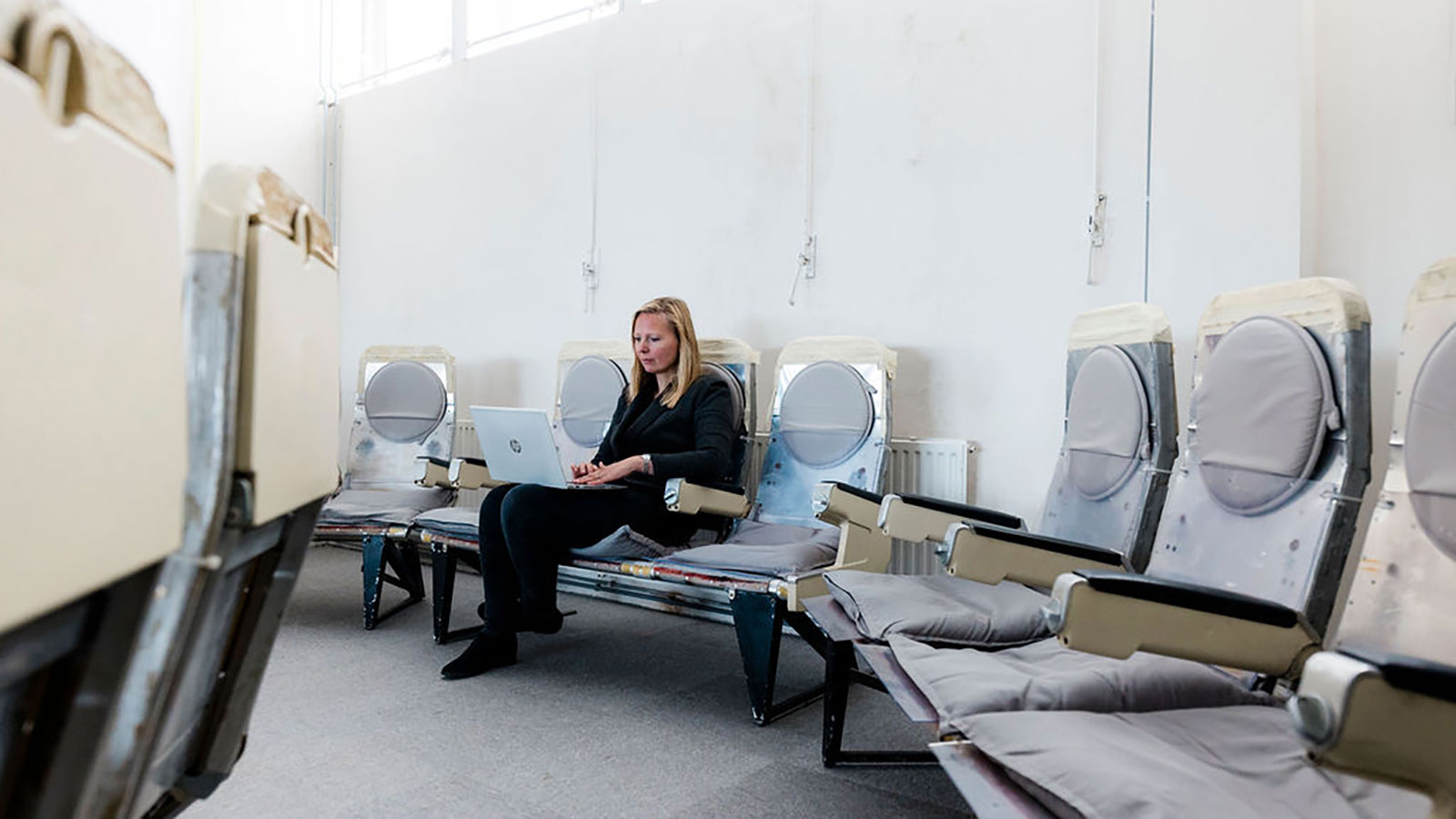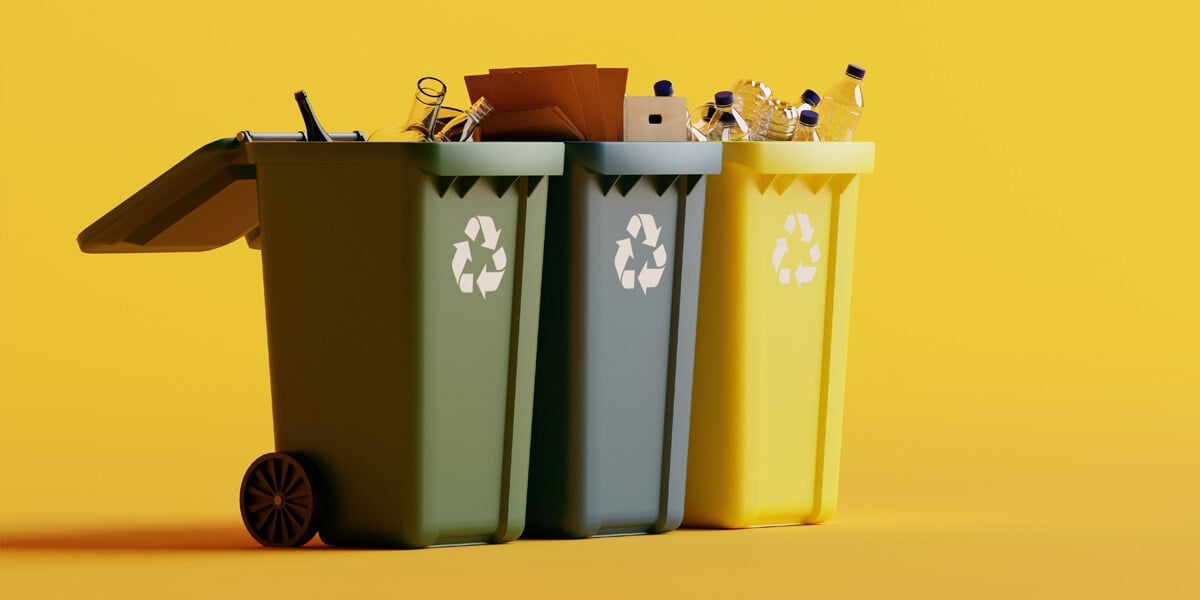Influencing behavior to better separate waste can be a challenge. A well-thought-out waste collection structure can help with this. We previously paid attention to positively influencing behavior. Today Zero Waste Week focuses on an effective design and associated communication tools to guide employees towards more effective behavior around zero waste.
1. Create awareness and urgency
Creating awareness about the urgency of waste separation is an excellent first step. As research indicates, although 78% of people worldwide are concerned about environmental problems, only 59% see climate change as a major issue. By using positive communication that emphasizes the dangers of waste and careless handling of raw materials, employees can be reminded of the importance of waste separation and making better choices around raw material use. A zero waste campaign helps with this. Use posters, digital displays and information leaflets at strategic locations to convey this message.
2. Emphasize individual impact
Many people are more likely to take action when they see how their individual efforts can make a difference. Use communication that emphasizes the personal impact of waste separation. For example: "By separating your waste, you help keep X kilos of residual waste containing recyclable raw materials out of the incinerator." This can be done via stickers on waste bins, information boards, sharing an internal dashboard with waste data or social media.
3. Increase knowledge and skills
Employees often do not know exactly how to separate waste correctly. Provide clear and accessible information about which items belong in which bin. Use visual aids such as colorful icons and simple instructions directly on the waste bins. Post information in places where people throw away their waste, such as in canteens, corridors and public areas. An interactive quiz, training and e-learning also contribute to increasing knowledge and changing behavior. Do you have screens in your organization, for example in the canteen and reception hall? Use these screens to inform employees about the zero-waste ambition and also use this channel to provide separation instructions.
4. Ensure convenience and accessibility
People separate more waste when it is easy and accessible. Here are some specific tips to achieve this:
Recycling stations:
Place waste bins in clusters at strategic locations such as entrances, exits and other high-traffic areas. Call these clusters "recycling stations" or "recycling center" to remind employees to separate their waste:
Useful openings:
Make sure that the openings of the waste containers are easily accessible and are placed at the top or sloping side. They must also be large enough (~800 cm²) to facilitate the introduction of waste.
Consistent color and icon use:
Use consistent colors and universal icons. A universal design makes it easier for employees to recognize and use the right waste bin. Make sure that the color of the waste stream on the waste bin stands out. This stimulates the recognition of the waste flow and leads to higher waste separation.
Simple icons:
Icons should consist of one uniform style to simplify recognition.
Clear instructions:
Instructions should be clear but concise, with a list of unwanted items on the left and wanted items on the right. This helps reduce contamination by avoiding improper separation. Make sure the instructions are placed at eye level.
Residual waste bins on the right (or do not place):
Place the residual waste bin on the right side, because people read from left to right. This way, residual waste is seen last and therefore used least. At Milgro we said goodbye to the residual waste bin, because we really want to achieve a zero waste office. Read more about our approach here.
Clear names:
Write out “PD” completely, because not everyone knows what it means. Use specific terms such as “Paper” instead of “Paper and Cardboard” to avoid confusion and contamination. “GFT and food waste” works better than “GFT” alone.
Slot for paper and round opening for cups:
Provide specific openings such as a slot for paper and a round opening for cups to make the different waste flows easier to recognize.
Open waste bins:
Use open waste bins instead of closed bins so that users can inspect the contents. This reduces the risk of contamination.
5. Use nudging and reminders
Nudging can be effective to stimulate desired behavior without restricting freedom of choice. Place reminders near waste bins to encourage employees to separate waste. These can be arrows, footsteps or short messages such as "Think of the environment, separate your waste!"
6. Implement social norms
People tend to follow the behavior of others. Use social norms by sharing information about how many colleagues already separate waste. For example: make waste separation a topic of discussion. Milgro places a display case in the canteen for used raw materials that cannot be accommodated, so that we can discuss with each other whether the flow could have been prevented or where it could be collected.
7. Involve all employees
An important final tip is to involve employees, and this is often easier than organizations think, because employees often separate their own waste at home. It is also experienced as strange that companies sometimes collect less effectively and extensively than municipalities require from households. In addition, employees much more often make a conscious choice for an organization where they want to work, and sustainability is also part of the decision.
If not all employees are yet enthusiastic about waste separation and sustainability, there is a good chance that this awareness will cause them to make different choices at home in preventing waste and/or organizing better waste collection. In short, a zero waste policy extends beyond just your organization.
Good tips
A tip to keep in mind is not to make the communication negative and pedantic. Keep it positive, emphasize successes and formulate positive objectives: for example, 100% separation of waste flows instead of 0% residual waste.
Involve all your colleagues in waste separation initiatives by organizing training, e-learning and informative lunches. Collaborate with partners who share information about a specific stream to raise awareness and promote participation. For example, we are organizing a workshop (in Dutch) on composting together with the Compost Community. Interested?
By implementing these practical strategies, waste collection structures can significantly improve employees' waste separation behavior. A final tip: although there are different theories, behavior change usually takes between 3 weeks and 2 months – perhaps a little longer at work because employees are not there every day. So maintain a period of 6-8 weeks to be able to make real steps.
Tips of ideeën?
Have you also included zero waste regulation in your purchasing policy or do you have tips or ideas for preventing waste flows? Let us know! We would like to hear what you are doing, for example to reduce food waste or avoid packaging waste. We will take your suggestions into account in our next blogs, in which we will discuss solutions for various waste streams.














